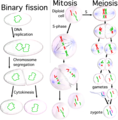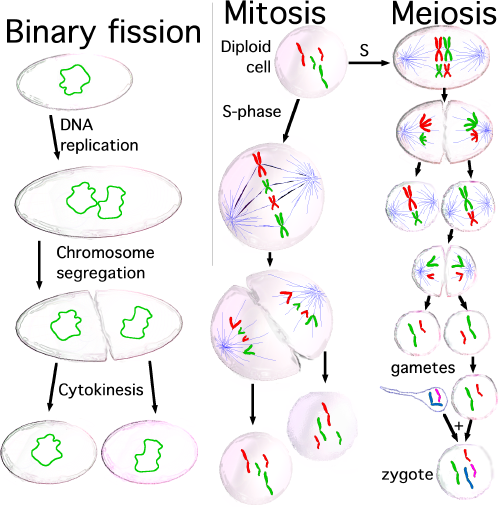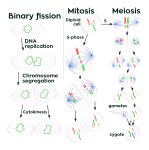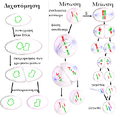File:Three cell growth types.png
Three_cell_growth_types.png (499 × 507 pixel, dimensione del file: 170 KB, tipo MIME: image/png)
Cronologia del file
Fare clic su un gruppo data/ora per vedere il file come si presentava nel momento indicato.
| Data/Ora | Miniatura | Dimensioni | Utente | Commento | |
|---|---|---|---|---|---|
| attuale | 22:36, 16 set 2005 |  | 499 × 507 (170 KB) | Saperaud~commonswiki | Three types of cell reproduction are compared: the relatively simple Binary fission and two more complicated types that either involve mitosis or meiosis. '''Binary fission'''. Organisms such as bacteria typically have a s |
Pagine che usano questo file
Nessuna pagina utilizza questo file.
Utilizzo globale del file
Anche i seguenti wiki usano questo file:
- Usato nelle seguenti pagine di en.wikipedia.org:
- User:JWSchmidt/Images
- Wikipedia:Wikipedians/Graphic artists
- Template:Pic of the day/Archive1
- Wikipedia:Featured picture candidates/April-2004
- Spindle checkpoint
- Portal:Biology/Featured picture
- Wikipedia:Picture of the day/June 2004
- Wikipedia:Picture of the day/May 2005
- Wikipedia:POTD/May 3, 2005
- Wikipedia:Picture of the day/May 3, 2005
- User:Cyde/Featured pictures
- Wikipedia:Featured picture candidates/delist/2013
- Wikipedia:Featured picture candidates/delist/Three cell growth types
- User:Cmboge2016/sandbox
- Template:POTD/2004-06-21
- Portal:Biology/Featured picture/21
- Usato nelle seguenti pagine di es.wikibooks.org:
- Usato nelle seguenti pagine di fr.wikipedia.org:
- Usato nelle seguenti pagine di ja.wikipedia.org:
- Usato nelle seguenti pagine di nn.wikipedia.org:
- Usato nelle seguenti pagine di no.wikipedia.org:
- Usato nelle seguenti pagine di pl.wikipedia.org:
- Usato nelle seguenti pagine di ru.wikipedia.org:
- Usato nelle seguenti pagine di simple.wikipedia.org:
- Usato nelle seguenti pagine di sr.wikipedia.org:
- Usato nelle seguenti pagine di sv.wikipedia.org:
- Usato nelle seguenti pagine di te.wikipedia.org:
- Usato nelle seguenti pagine di th.wikipedia.org:
- Usato nelle seguenti pagine di uk.wikipedia.org:
- Usato nelle seguenti pagine di ur.wikipedia.org:
- Usato nelle seguenti pagine di xh.wikipedia.org:
- Usato nelle seguenti pagine di zh.wikipedia.org:













